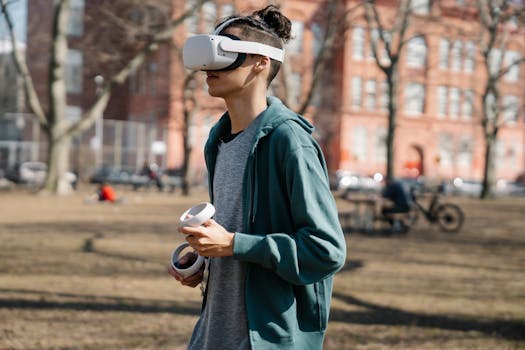
Virtual Realities: The Next Frontier in Human Connection
Virtual Realities: The Next Frontier in Human Connection is a concept that has been gaining momentum in recent years. With the advancement of technology, virtual realities have become a reality, and they are changing the way we live, work, and interact with each other. In this article, we will explore the world of virtual realities and its potential to revolutionize human connection.
Virtual reality (VR) is a computer-generated simulation of a three-dimensional environment that can be experienced and interacted with in a seemingly real or physical way. The technology has been around for decades, but it is only recently that it has become accessible and affordable for the masses. With the help of VR headsets, controllers, and other devices, people can now immerse themselves in virtual worlds and experience things that were previously impossible.
The Potential of Virtual Realities
The potential of virtual realities is vast and varied. One of the most significant applications of VR is in the field of education. Virtual realities can provide students with immersive and interactive learning experiences that can enhance their understanding and retention of complex concepts. For example, medical students can use VR to practice surgeries and other procedures in a safe and controlled environment. Similarly, history students can use VR to explore historical sites and events in a more engaging and interactive way.
Another significant application of VR is in the field of therapy and treatment. Virtual realities can be used to treat mental health conditions such as anxiety, PTSD, and phobias. For example, exposure therapy, which involves gradually exposing patients to the things they fear, can be done in a virtual environment, making it safer and more effective. Additionally, VR can be used to treat physical disabilities, such as paralysis and stroke, by providing patients with a virtual environment to practice motor skills and rehabilitation exercises.
The Future of Human Connection
Virtual realities have the potential to revolutionize human connection. With the help of VR, people can connect with each other in new and innovative ways. For example, virtual reality can be used to create virtual events, such as conferences, meetings, and parties, that can be attended by people from all over the world. This can help to reduce the need for physical travel and make it easier for people to connect with each other, regardless of their location.
Additionally, virtual realities can be used to create virtual communities, where people can connect with each other and share experiences and interests. For example, virtual reality can be used to create virtual support groups, where people can connect with others who are going through similar experiences and challenges. This can help to reduce feelings of loneliness and isolation and provide people with a sense of belonging and connection.
Conclusion
In conclusion, virtual realities are the next frontier in human connection. With the advancement of technology, VR has become a reality, and it is changing the way we live, work, and interact with each other. The potential of virtual realities is vast and varied, and it has the potential to revolutionize the way we connect with each other. As the technology continues to evolve and improve, we can expect to see new and innovative applications of VR that will further enhance human connection and change the world for the better.



